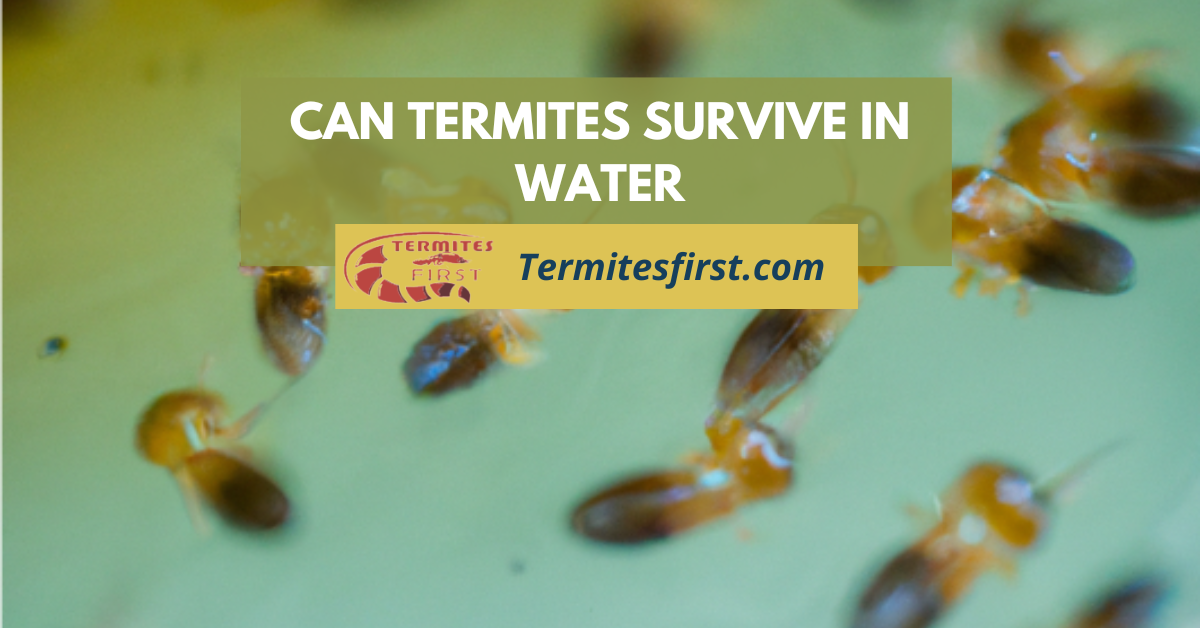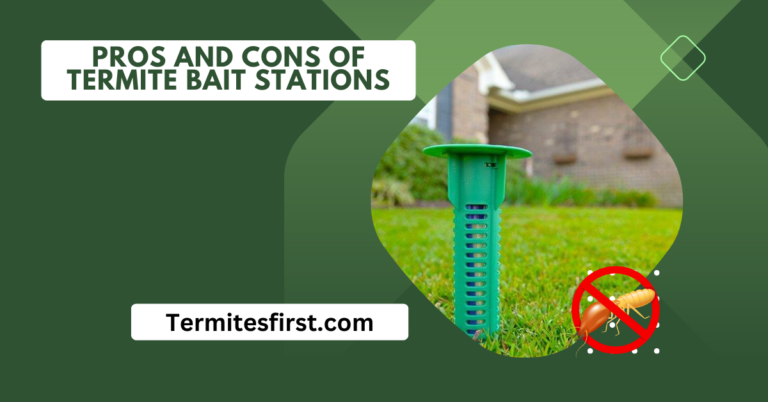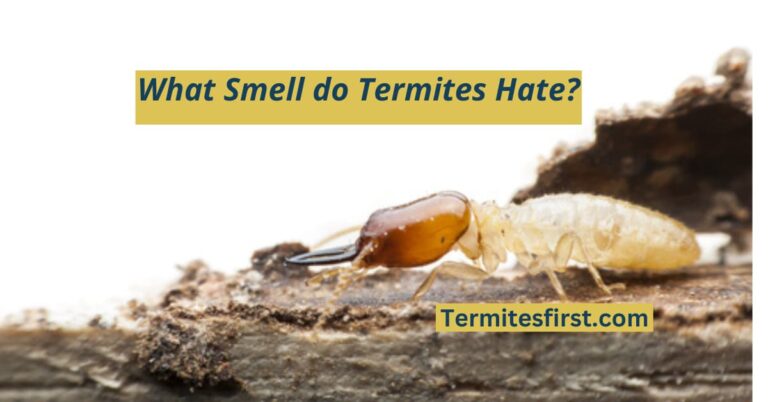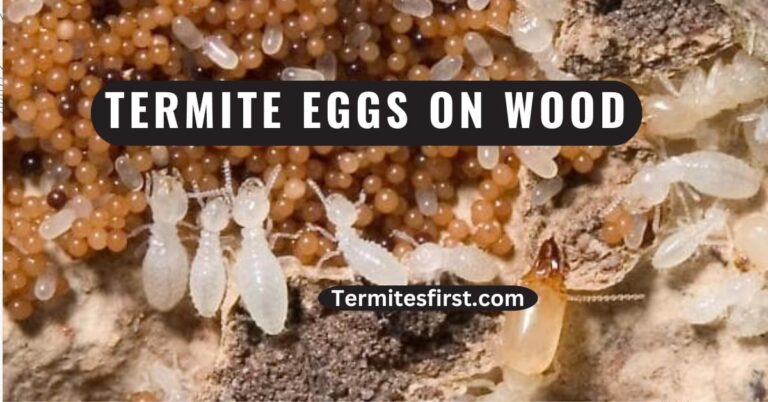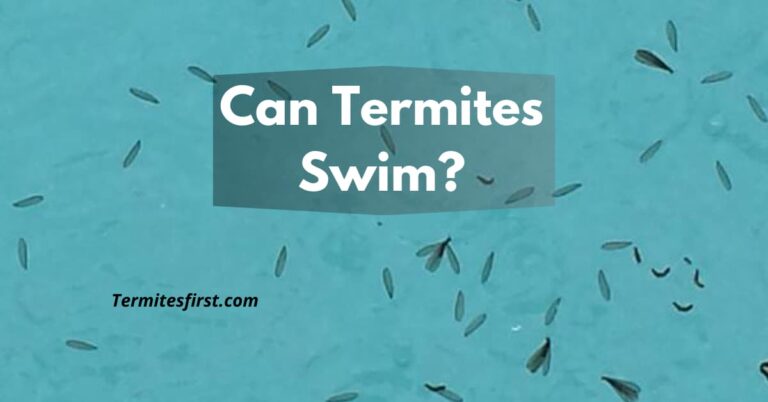Can Termites Survive in Water: A complete Guide
“Can termites survive in water“? Are you curious about whether termites can survive in water? While these pesky pests thrive in moist environments, their relationship with water might surprise you. Contrary to popular belief, termites cannot live underwater for extended periods. However, they can withstand brief exposure to water and even use it as a source of hydration. By exploring this topic further, you’ll gain insights into how to protect your home from these destructive insects.
Termites’ Relationship with Water
Importance of Water for Termites
Termites rely on water for their survival and prosperity. Without much water, they cannot thrive. To maintain the ideal environment within their colonies, termites need moisture to regulate humidity levels. Seeking out water sources is crucial for sustaining termite populations.
In a termite colony, water plays a vital role in ensuring the right conditions for their existence. The presence of water helps termites create mud tubes that protect them from predators and maintain a suitable living environment. Moreover, termites may move between food sources thanks to these constructions without drying out.
Active Search for Water Sources
Termites are constantly on the lookout for water to support their colonies. They actively seek out areas with high moisture content to establish new nests or expand existing ones. By finding reliable sources of water, termites can ensure the longevity and success of their communities.
When searching for water, termites might come into contact with various substances such as soil or other materials that contain moisture. This contact allows them to absorb the necessary water to sustain themselves and continue building and maintaining their habitats effectively.
Why Termites Are Attracted to Water?
Importance of Water for Termites
They need water for digestion and to stay hydrated. Without access to water, termites cannot thrive or create colonies. It helps them break down cellulose from wood, aiding in their digestion process. Termites use it not only for hydration but also to maintain the humidity levels required within their colonies.
Ideal Conditions for Termite Infestations
Damp areas are highly attractive to termites due to the favorable conditions they provide. Moist environments create a perfect habitat for termites, encouraging them to establish colonies and expand rapidly.
When there is excess moisture present, such as leaky pipes or standing water around a property’s foundation, it can lead termites indoors. These pests are drawn to areas with high humidity levels where they can easily access water sources necessary for their survival.
Can Termites Survive in Water
Can Termites Live in Water
Termites are not well-equipped to survive in water for extended periods. Waterlogged conditions can be fatal to termites as they may drown due to their inability to swim or float. While some termites can withstand short exposures to water, prolonged contact with water is detrimental.
Termites have evolved adaptations that help them avoid water. They typically prefer dry environments and construct their colonies accordingly. When exposed to excessive moisture, termites will often try to find ways to escape the wet conditions and locate drier areas where they can thrive.
How Long Can Termites Survive in Water
Even though termites cannot live indefinitely in water, some species have shown resilience for a limited time under such conditions. For example, subterranean termites might survive a few hours submerged before succumbing. However, this survival capability varies among different termite species based on their physiological characteristics.
The ability of termites to endure in water also depends on factors like temperature and the termite’s life stage. Generally, worker termites are more susceptible to drowning than soldier or reproductive termites due to differences in their physiology and role within the colony.
Can Termites be Drowned?
Surviving in Water
Termites can survive in water briefly, but they are not adapted to living underwater for extended periods. Flooding can displace termites from their nests, making them seek higher ground to escape the water.
Termites have a survival strategy against water – they construct mud tubes that act as protective tunnels shielding them from water damage. These mud tubes help termites maintain contact with the soil while ensuring protection against excess moisture.
Attraction to Moisture
Excessive moisture is a significant attractant for termites and could lead to infestations inside homes. The presence of much water or high levels of moisture can create an ideal environment for termites, drawing them closer to properties seeking shelter and food sources.
Termites in Hot Water Tanks
It is well known that termites may endure in a variety of settings, including hot water tanks. These insects are attracted to moisture, making hot water tanks an ideal environment for them to thrive. Termites have the ideal habitat within the tank because of its warmth and moisture.
Detection of Termite Infestations
One way to detect termite infestations in hot water tanks is through the presence of mud tubes and tunnels. These structures are created by termites as they move between their nest and food sources, indicating a potential infestation within the tank. Mud tubes and tunnels can be visible on the exterior or interior surfaces of the tank. Presence of these structures signifies an active termite colony within the hot water tank.
Can termite survive in cold water?
Sensitivity to Low Temperatures
Termites cannot thrive in cold water because they are extremely sensitive to low temperatures. Excessive exposure to cold water can quickly lead to the demise of termite colonies.
Excessive moisture poses a significant threat to termite colonies as it disrupts their habitat. While termites require moisture for survival, being submerged underwater exceeds their specific moisture requirements.
Ineffective Elimination Methods
Boiling water is not an effective method for eliminating termites. The high temperature of boiling water does not reach the hidden areas where termites reside within structures like walls or wooden beams.

Can Termites Lay Eggs in Water Tank?
Ideal Conditions for Termite Egg-Laying
Termites are highly dependent on moisture to survive and reproduce. In water tanks, if there is significant water damage, creating a damp environment, it becomes an ideal spot for termites to lay eggs. The presence of moisture within the tank can attract termites seeking a suitable location for their nests.
Termites have the ability to exploit any source of water available, including water tanks. They may use mud tubes or tunnels to access these areas and establish their colonies. Once inside a water tank, if the conditions are favorable with enough moisture content, termites can indeed lay their eggs within this environment.
Risks of Termite Infestation in Water Tanks
The risk of termite infestation in water tanks poses potential hazards such as contamination of drinking water due to termite activities. Termites laying eggs within the tank can lead to structural issues over time as they feed on cellulose-based materials present in the surroundings.
Fix Leaks Promptly
Water accumulation can attract termites, leading to potential infestations. Moisture from roof or plumbing leaks provides these bugs with the perfect habitat. Any leaks should be fixed as once to avoid standing water, which invites termites. Ensure your home’s plumbing and roof are well-maintained to avoid creating moisture hotspots.
Proper maintenance reduces the risk of termite infestation due to water damage caused by leaks. Keep an eye out for any indications of water leaks in your house and take quick action if you find any. This simple step can help control moisture levels and deter termites from invading your space.
Enhance Drainage Systems
To prevent moisture buildup, ensure that proper drainage is maintained around the foundation of your home. Poor drainage can lead to water pooling near the structure, creating a welcoming environment for termites seeking moisture sources. By enhancing your drainage systems, you can effectively reduce the risk of termite infestation related to excess moisture.
Improving drainage helps minimize standing water around your home, reducing the chances of attracting termites looking for moisture-rich environments. Properly directing water away from the foundation prevents excessive dampness that could entice these destructive pests.
Use Dehumidifiers in Damp Areas
Damp areas like basements are prone to high humidity levels, which can create an attractive habitat for termites seeking moisture-rich environments. Utilizing dehumidifiers in these spaces helps regulate humidity levels and decrease overall moisture content, making them less appealing to termites.
Dehumidifiers play a crucial role in controlling indoor humidity levels, especially in areas susceptible to dampness such as basements and crawl spaces. By reducing excess moisture through dehumidification, homeowners can actively discourage termite infestations linked to high humidity conditions.
Conclusion:
You’ve learned that termites can’t survive in water but are attracted to moisture. To protect your home, ensure proper drainage and fix leaks promptly. By managing moisture, you can deter termites and safeguard your property. Maintaining your home and doing routine inspections will help you avoid termite problems. Take action now by checking your home for excess moisture and addressing any problem areas. By being proactive, you can prevent termite infestations and protect your biggest investment your home.
Frequently Asked Questions:
Yes, termites require moisture to live as they are attracted to damp environments. Water is essential for their survival and colony development.
To prevent termite infestations, fix any leaks promptly, ensure proper ventilation, use dehumidifiers if needed, and maintain good drainage around your property.
Termites can survive submerged in water for a few hours to a couple of days at most.
Although termites may not directly infest structures in waterlogged areas, they can still pose a threat by foraging for food sources nearby. Additionally, structures with wood-to-soil contact may be vulnerable to termite infestation, even in wet conditions.

